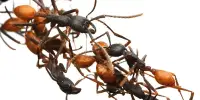Although they may seem like silent, uninterested creatures to us, plants have been discovered to emit high-pitched clicking sounds when they are attempting to obtain water. In theory, nearby plants may detect and respond to these vibrations.
Israeli researchers capture short sound pulses from tomato and tobacco plants in a greenhouse. They occurred more frequently when the plants weren’t watered or when their leaves were losing a lot of water.
The noises were around the volume of a calm conversation, but they were predominantly between 40,000Hz and 60,000Hz, which is too high for human hearing, which only goes up to about 20,000Hz. They should, however, be audible to dogs, which can hear up to 45,000Hz, and cats, which can hear up to 64,000Hz.
Although it’s lovely to believe that plants communicated about a water deficit through sound, this may not have been the case. Instead, the noises might be caused by bubbles growing in the plants’ stems due to a basic physical process.

When plants are photosynthesizing, water from their leaves evaporates and is lost. Plants skillfully utilize the way that water molecules attach to one another in place of actively lifting the water to their leaves.
Narrow tubes that are individually filled with a continuous column of water are used to transport water up from the roots. Similar to when you drink through a straw, each water molecule that evaporates pushes on the one behind it, which pulls on the next.
The water column may break in the middle of the day when leaf evaporation is at its highest, or when the soil is too dry and the plant cannot easily absorb water from its roots. The tube creates a bubble as a result.
This appears to be the best explanation because these are the precise circumstances under which the ultrasonic pulses occurred. Indeed, clicks created by water columns breaking have been often recorded and used to assess how badly plants are suffering from drought.
However, most earlier studies employed microphones attached to the plant’s surface. The noises were caught by microphones located some distance away from the facility in the Israel paper.
It was the first investigation to demonstrate that these clicks may be heard up to five meters away. This implies that even if the clicks are unintentional, they may include information beneficial to other plants or animals.
Other plants may respond by lowering their water need. For example, stopping photosynthesis. Insects nearby may notice that the clicking plant is vulnerable to assault.
















